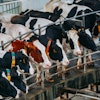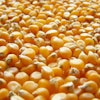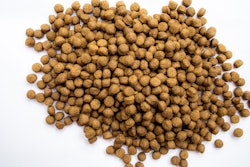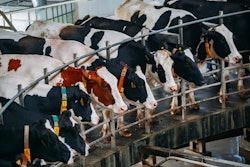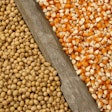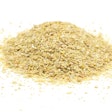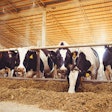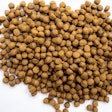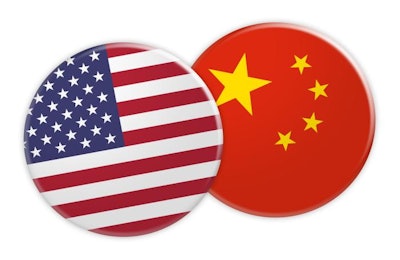
A new report reveals vulnerabilities in the American feed supply chain and the nation's entire food system due to U.S. dependence on China for critical animal and human food inputs.
Strategic Assessment on the Impact of Vitamin and Amino Acid Supply Chain Disruptions on U.S. Food Security, published by the Institute for Feed Education and Research (IFEEDER), explores how a shortage of vitamin and amino acid supplementation ingredients essential for optimal growth of domestic livestock and poultry would affect both on-farm production and animal welfare.
"[This report] confirms what many of us in the feed industry have long suspected, but now we have the data to back it up," said Constance Cullman, president and CEO of the American Feed Industry Association (AFIA).
Alarming concentration of imports from single source
Decision Innovation Solutions (DIS) and Lobo Consulting collaborated on research for the report using publicly available data on global vitamin and amino acid production, U.S. import and export quantities and utilization rates in domestic livestock diets.
The report investigated vitamins and amino acids critical in livestock and poultry production, including vitamin A, thiamine (B1), riboflavin (B2), niacin (B3), biotin (B7), vitamin B12, vitamin D3, vitamin E, lysine, threonine, tryptophan and methionine.
From 2020 to 2024, the data revealed alarming levels of concentration in imports from China, with the U.S. currently relying on China for 78% of total vitamin imports. China controls 62% of global amino acid production and produces upwards of 80% of the global supply of vitamins used in pet foods, animal feed and pharmaceutical products.
"Take lysine, where 100% of our imports are coming from China, or 85% of our threonine or 93% of our vitamin B1," said  Lara Moody, executive director, IFEEDER
Lara Moody, executive director, IFEEDER
This isn't just a recent trend — it's been accelerating for the last decade. Looking at vitamins collectively, Moody said "from 2015 to 2019, 68% of U.S. vitamin imports were coming from China, but from 2020 to 2024, it increased to over 76%."
Since there are few other global suppliers of these ingredients, the U.S. currently has little or no recourse if China's supply were disrupted, the report found.
To evaluate whether alternative feed ingredients could meet vitamin and amino acid supply limitations, researchers modeled diet modification strategies. While farmers could mitigate negative impacts in some cases, the alternatives would not remedy all harm to production efficiency and animal health.
Strategic pricing and overcapacity drive market dominance
Analysis of pricing data revealed what appears to be China's strategic effort to dominate these markets.
"The price paid for vitamins originating in China between 2015 and 2019 was about 18% less than the next top five suppliers," said Spencer Parkinson, president and CEO of DIS. "However, beginning in 2020, that gap widened to the point that it's now 34% less expensive to source vitamins out of China than the next top five suppliers."
For tryptophan, the disparity is even more dramatic—the unit price is 80% less from China relative to the top five suppliers.
Perhaps most concerning is evidence of massive overcapacity. Philip Lobo, founder of Lobo Consulting, said capacity utilization is critical because bankers target about 80% minimum as an indicator of a healthy, ongoing business.
Yet for a majority of vitamins, utilization rates are well below that 80% threshold.
The report highlighted how quickly market dynamics can shift, as demonstrated by methionine. In 2023, U.S. imports came from diverse sources including Singapore, Belgium, China, Malaysia and Japan. But research revealed a significant increase in Chinese production, with capacity growing from 20% to an estimated 32% of world production by June 2025. By 2024, 87% of U.S. methionine imports came from China, with Chinese prices 55% less than the top four suppliers.
This comprehensive evidence demonstrates that China is systematically dominating these markets through government support (including export credits), massive overcapacity and below-market pricing.
Action needed to address national security concern
AFIA considers U.S. dependence on Chinese vitamins and amino acids not merely an economic concern, but a matter of Constance Cullman, president & CEO, AFIA
Constance Cullman, president & CEO, AFIA
"We've been cautioning that China's dominance in this market creates significant risks, but we learned with this research that their dominance is growing," Cullman said. "As a result, our supply chain has become far too concentrated and far too vulnerable to disruption."
To mitigate the threat of a U.S. vitamin and amino acid supply disruption, AFIA is calling for a strategic approach with policymakers, trade officials and the food and agriculture industry working together toward preparedness.
"We have to move from concern about this particular issue to coordinated action on it," Cullman said.
AFIA is committed to working with stakeholders on a strategy aimed at identifying and prioritizing the most vital vitamins and amino acids for urgent action, Cullman said. Enacting policy that protects U.S. capacity and attracts new investment in vitamin and amino acid production will ultimately diversify the global supply of critical inputs for animal production.
Cullman noted that growing bipartisan interest in Congress of the Securing American Agriculture Act is a positive step toward a more resilient, secure food system. IFEEDER's new report serves to reinforce those efforts and provide data to guide risk-based, science-driven policy.

